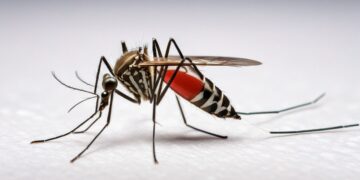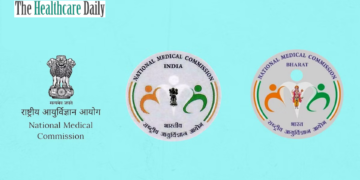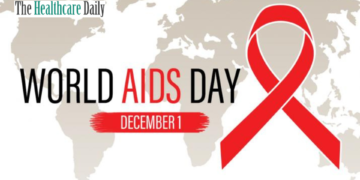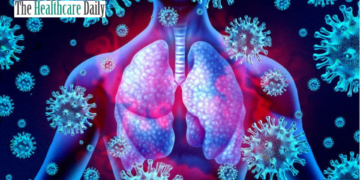Allergies are a prevalent health issue that occurs when the body’s immune system reacts to substances that are usually harmless. These substances, known as allergens, can trigger allergic reactions when they come into contact with the body. The key to managing allergies lies in identifying these allergens and seeking appropriate treatment.
Allergies are a common health concern affecting millions of people worldwide. They can manifest in various forms, from seasonal allergies causing sneezing and itchy eyes to food allergies leading to more severe reactions. Understanding the triggers of allergies and the treatment options available is essential for managing these conditions effectively. In this article, we will try to understand allergies, their types, symptoms and effective treatment.
Identifying Allergy Triggers
Identifying allergy triggers is an important step in managing allergies effectively. Allergies can be triggered by a vast array of substances, including pollen, dust mites, pet dander, certain foods, insect stings, and more. Pinpointing the specific allergen responsible for your allergic reactions is essential for making the right treatment. The process often involves careful observation and, in some cases, professional testing conducted by allergists.

By understanding and recognising the triggers, individuals can take proactive measures to reduce exposure. For instance, if you identify pollen as a trigger, you can monitor pollen forecasts and stay indoors during high pollen seasons. Knowing your allergens empowers you to make informed decisions to alleviate symptoms and improve your overall quality of life.
Common Allergy Symptoms
Allergy symptoms can manifest in a variety of ways, depending on the type of allergen and an individual’s sensitivity. These symptoms can range from mild discomfort to severe reactions. Understanding these symptoms is crucial for timely recognition and management.
Sneezing
One of the most common allergy symptoms, sneezing occurs as a reflex to clear the nasal passages of irritants. It’s often accompanied by a runny or stuffy nose.
Runny or Stuffy Nose
Allergic rhinitis, often referred to as hay fever, can cause a runny or stuffy nose. The inflammation in the nasal passages leads to congestion or excessive nasal discharge.
Itchy or Watery Eyes
Allergens can trigger an immune response in the eyes, leading to itching and excessive tearing. This symptom is particularly common in individuals with allergies to pollen and pet dander.
Skin Rashes or Hives
Some allergens can cause skin reactions, leading to redness, itching, and the development of hives. These itchy, raised welts on the skin can be uncomfortable.
Shortness of Breath
Allergic reactions can affect the respiratory system, causing shortness of breath. This symptom is more common in individuals with asthma or severe allergies.
Coughing
Allergens can irritate the airways, leading to persistent coughing. Coughing is a common symptom in individuals with allergies to dust mites or pet dander.
Nausea or Vomiting
In cases of severe food allergies, exposure to allergenic foods can lead to nausea and vomiting, often accompanied by other digestive symptoms like diarrhoea.
Swelling of the Lips, Tongue, or Throat (in severe cases)
Anaphylactic reactions to allergens can cause significant swelling, especially in the lips, tongue, and throat. This symptom is a medical emergency and requires immediate intervention.
Recognising these common allergy symptoms is essential for taking appropriate action. Mild symptoms may be managed with over-the-counter medications, while severe symptoms, especially in the case of anaphylaxis, require urgent medical attention. It’s crucial to consult a healthcare professional for proper diagnosis and guidance on managing allergies effectively.
Treatment of Allergies
The treatment of allergies focuses on alleviating symptoms and, in some cases, preventing allergic reactions. Let’s explore some of the common approaches to managing allergies.

Avoidance
The simplest way to manage allergies is to avoid exposure to the allergen. For example, if you have a pollen allergy, staying indoors during peak pollen seasons can help reduce your symptoms. Similarly, if you’re allergic to a specific food, avoiding that food is essential.
Antihistamines
Over-the-counter or prescription antihistamines can help relieve common allergy symptoms like sneezing, runny nose, and itching. These medications work by blocking the action of histamines, chemicals released by the body during an allergic reaction.
Decongestants
Decongestants can relieve nasal congestion, making it easier to breathe. They are available in various forms, including oral pills and nasal sprays.
Corticosteroids
Corticosteroids can reduce inflammation and provide relief for more severe allergy symptoms. They are available as nasal sprays, inhalers, and oral medications.
Allergy Shots (Immunotherapy)
Allergy shots involve a series of injections containing small amounts of the allergen. Over time, these shots can help the body build tolerance to the allergen, reducing the severity of allergic reactions.
Epinephrine
For individuals with severe, life-threatening allergies (anaphylaxis), carrying an epinephrine auto-injector is crucial. Epinephrine can quickly reverse the effects of a severe allergic reaction.
Food Allergies and Their Management
Food allergies are a specific subset of allergies that can be particularly concerning. Common food allergens include peanuts, tree nuts, milk, eggs, soy, wheat, fish, and shellfish. Food allergies can range from mild to severe, and some individuals may experience anaphylactic reactions when exposed to their allergen.
Managing food allergies often involves strict avoidance of allergenic food and careful label reading. For severe food allergies, individuals are advised to carry epinephrine and be prepared to use it if accidental exposure occurs.
Environmental Allergies: Pollen, Dust, and Pet Dander
Environmental allergies, including pollen, dust mites, and pet dander allergies, are among the most common. Managing these allergies often involves a combination of avoidance measures and medication.To manage pollen allergies, individuals can check pollen forecasts and stay indoors during high pollen seasons. Using air purifiers and keeping windows closed can also help reduce exposure.

Dust mite allergies can be managed by using allergen-proof covers on pillows and mattresses, washing bedding regularly in hot water, and keeping indoor humidity levels low.Pet dander allergies may require keeping pets out of bedrooms, frequent cleaning, and using high-efficiency particulate air (HEPA) filters in the home.
Seeking Professional Guidance
If you suspect you have allergies or experience symptoms, it’s advisable to seek professional guidance. Allergists, specialized doctors in the field of allergies, can perform tests to identify specific allergens and recommend appropriate treatment options. These tests may include skin prick tests, blood tests, or patch tests.
Allergy Prevention
Preventing allergies is not always possible, but some strategies may reduce the risk, especially in children. For instance, breastfeeding infants and introducing solid foods at the appropriate time can help prevent food allergies. Avoiding tobacco smoke exposure during pregnancy and early childhood may also lower the risk of allergies.
Conclusion
Allergies are a common health concern with a wide range of triggers, from environmental allergens to food allergens. Identifying these triggers and seeking appropriate treatment are essential steps in managing allergies effectively. Treatment options include avoidance measures, medications, and, in some cases, immunotherapy. If you suspect you have allergies, seeking professional guidance from an allergist is a wise choice. By understanding allergies and their triggers, individuals can take proactive steps to manage their symptoms and improve their quality of life.























